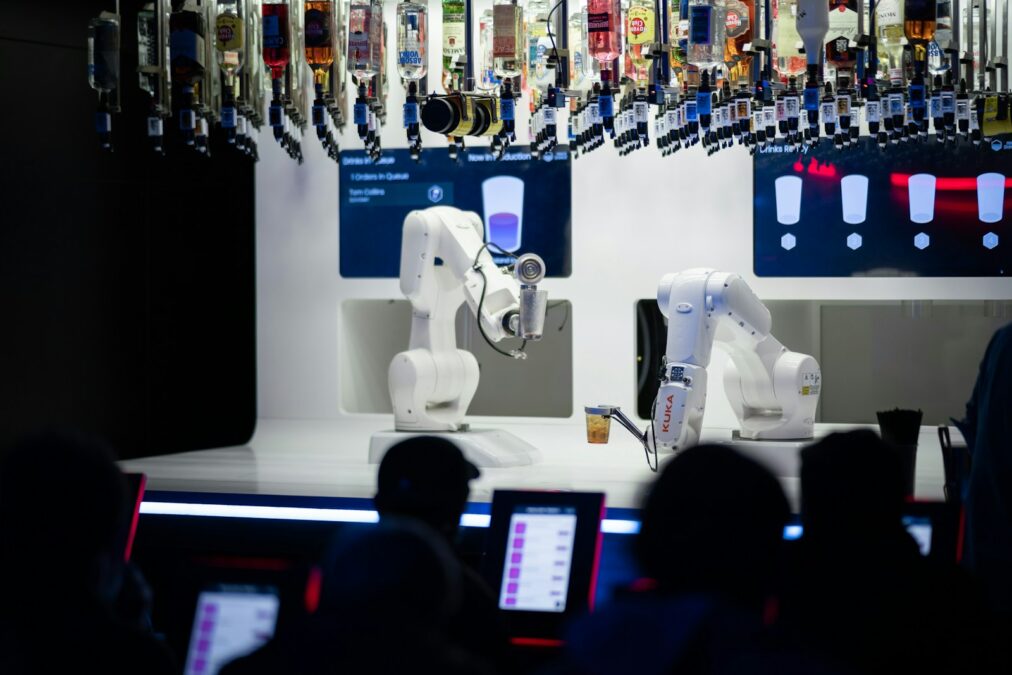The Dawn of Intelligent Machines: 5G Unleashing the Next Generation of Robotics
5G Robotics: Ushering in a New Era of Advanced Automation
5G Robotics, with its ultra-low latency, high bandwidth, and massive connectivity, is poised to revolutionize the field of robotics. The seamless integration of 5G and robotics is expected to unlock new levels of sophistication, autonomy, and collaboration, transforming industries and paving the way for a future where robots play an increasingly integral role in our lives.
Real-Time Control and Responsiveness
One of the most significant advantages of 5G for robotics is its ability to enable real-time control and responsiveness. 5G’s ultra-low latency allows for near-instantaneous communication between robots and their controllers, whether they are human operators or AI algorithms. This is crucial for applications that require quick decision-making and precise movements, such as autonomous vehicles, drones, and industrial robots. With 5G, robots can react to their environment in real time, making them safer, more efficient, and capable of performing complex tasks with greater precision.
Enabling Collaborative Robotics (Cobots)
5G is also instrumental in enabling collaborative robotics, where humans and robots work together in shared spaces. 5G’s high bandwidth allows for seamless communication and data exchange between humans and robots, facilitating smooth coordination and collaboration. For example, in manufacturing settings, 5G-enabled cobots can work alongside human workers, assisting with repetitive tasks, handling heavy objects, and performing precision assembly. This collaboration not only increases productivity but also improves worker safety by reducing the risk of injuries.
Edge Computing and AI-Powered Robotics
The combination of 5G and edge computing is unlocking new possibilities for AI-powered robotics. Edge computing allows for data processing and analysis to be performed closer to the source, reducing latency and enabling faster decision-making. This is particularly beneficial for autonomous robots that need to process large amounts of sensor data in real time. By combining 5G’s low latency with edge computing’s processing power, robots can become more intelligent, adaptable, and capable of learning from their environment. This opens up new avenues for applications in areas such as healthcare, agriculture, and logistics.
5G Robotics in Saudi Arabia and the UAE: A Vision for the Future
NEOM: A Futuristic City Powered by 5G and Robotics
Saudi Arabia’s ambitious NEOM project, a futuristic city envisioned as a hub for innovation and sustainability, is set to leverage 5G and robotics to create a new model for urban living. 5G networks will provide the backbone for a wide range of robotic applications, including autonomous transportation, smart infrastructure, and personalized services. Robots are expected to play a key role in various aspects of city life, from construction and maintenance to healthcare and hospitality. NEOM’s vision for a 5G-powered, robot-driven city is a glimpse into the future of urban living.
Dubai’s Robotics and Automation Strategy
Dubai, known for its embrace of cutting-edge technologies, has also recognized the transformative potential of 5G and robotics. The city has launched a comprehensive robotics and automation strategy aimed at integrating these technologies into various sectors, including healthcare, logistics, and customer service. Dubai’s vision is to become a global leader in robotics and automation, and 5G is a critical enabler of this ambition. With its world-class 5G infrastructure, Dubai is attracting investment and talent in the field of robotics, fostering a thriving ecosystem of innovation and entrepreneurship.
5G Robotics: A Catalyst for Economic Diversification
The adoption of 5G and robotics in Saudi Arabia and the UAE is not just about technological advancement; it is also a strategic move towards economic diversification. By investing in these cutting-edge technologies, these countries are creating new industries, attracting foreign investment, and fostering a skilled workforce. The development of 5G-powered robotics is also expected to boost productivity, efficiency, and competitiveness across various sectors, contributing to the long-term economic growth of the region.
Ethical Considerations and the Future of Work
The rise of 5G robotics raises important ethical considerations, particularly regarding the future of work. As robots become more sophisticated and capable of performing a wider range of tasks, there are concerns about job displacement and the need for workforce reskilling. It is essential for governments, businesses, and educational institutions to work together to address these challenges and ensure a smooth transition to a future where humans and robots collaborate effectively.
5G Robotics: A Paradigm Shift in Automation
The convergence of 5G and robotics represents a paradigm shift in automation. With 5G’s ability to provide seamless connectivity, real-time control, and massive data processing capabilities, robots are becoming more intelligent, adaptable, and collaborative than ever before. This opens up new possibilities for automation across various industries, leading to increased productivity, improved safety, and new economic opportunities. As 5G networks continue to expand and evolve, we can expect to see even more sophisticated and versatile robots that will play an increasingly important role in our lives.
#5G #robotics #automation #AI #artificialintelligence #machinelearning #Industry4.0 #smartfactories #industrialrobotics #collaborativerobots

